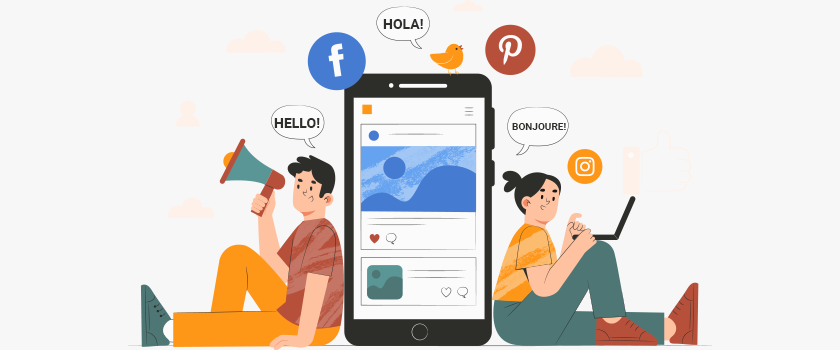Once considered a side feature, subtitles have worked their way into the mainstream of entertainment in international markets. Maybe you were watching a French art film late at night, or you needed captions for an indie drama. Subtitles were for the few foreign film buffs and those who needed them for accessibility.
Then came Netflix.
Netflix made subtitles mainstream. All of a sudden, millions of viewers started indulge-watching Netflix originals.
Subtitles opened doors to new languages, unknown perspectives, and different styles of storytelling. Shows what might’ve been considered “too foreign” for mass appeal was topping global charts. Hollywood, for the first time, wasn’t the only voice echoing across the globe.
It is reshaping how we consume media—and what stories we’re willing to hear.
Netflix Subtitling Evolution
Strategic Growth
When Netflix expanded into over 190 countries in 2016, their challenge was to figure out how to engage multilingual audiences authentically. It makes subtitling the most scalable solution in Netflix’s localization strategy.
- Speed & Cost Management: Dubbing requires voice talent, studio time, and post-production. Subtitling, by contrast, can be accomplished faster and with relatively fewer resources.
- Cultural Integrity: Professional subtitle services can help you preserve original voices and emotional nuance that help preserve the authenticity of performances.
- Localization Investment: Netflix developed subtitling pipelines before major launches. It also enabled smoother market penetration in non-English countries.
Catering to Diverse Preferences
Netflix realized that subtitling their content would do more for their engagement than just for the hearing-impaired:
- Multitaskers: Users in noisy environments or keeping low volume can rely on subtitles to watch videos.
- Language Learners: Subtitles are now used as tools for learning English, Spanish, Korean, and other languages.
- Fans of Global Genres: K-dramas, German sci-fi, and Bollywood romances attract large audiences. Many prefer subtitles to preserve original narratives and focus on local culture.
Around 80% of U.S. subscribers use subtitles or closed captions regularly, according to Netflix’s 2023 earnings call.
Changing Viewer Behavior
Subtitles Drive Authentic Viewing Experiences
More audiences are settling toward original audio with subtitles, seeking emotional integrity. Younger audiences are likely to turn on subtitles for movies in foreign languages.
Squid Game (2021): The worldwide viewers watch Squid Game in the Korean language with subtitles.
Dark (2017–2020): It was available in dubbed languages, but fans watched it in German so that the experience seemed more real.
- Subtitles allow actors’ original voices to resonate.
- Better comprehension of culturally specific expressions.
- Enhanced emotional connection.
Subtitles as Cultural and Viral Catalysts
Subtitles act as springboards for global success:
- Lupin (France) attracted 76 million households within a month, thanks to high-quality subtitling.
- All of Us Are Dead (Korea) reached #1 in over 25 countries.
- Meme culture thrives on screenshots of translated subtitles that gave rise to fan communities and viral dialogues.
A 2022 Omdia study found that 57% of Gen Z viewers prefer subtitles over dubbing.
Viewership by Age Group
| Demographic | Prefer Subtitles (Any Content) |
| 18–29 (Gen Z) | 61% |
| 30–44 (Millennials) | 58% |
| 45–64 (Gen X) | 30% |
| 65+ (Baby Boomers) | 27% |
It shows a significant generational transition in viewing preferences. It also suggests that subtitles are no longer a barrier but a preferred method of media consumption.
Case Studies: Success via Subtitles
Squid Game (South Korea, 2021)
- It became the most-watched Netflix series, with 1.6 billion hours viewed in 28 days.
- Viewers and linguists noted the English subtitles missed key cultural metaphors and character dynamics.
- Even minor subtitle inaccuracies can distort character perception and plot.
Money Heist (Spain)
- Underwhelming performance in Spain.
- Subtitles enabled a deeper connection with the international audience.
- Phrases like “Bella Ciao” and “For Nairobi!” became global chants—thanks to carefully adapted subtitles.
Dark (Germany)
- Required attentive, synchronized subtitling to preserve its multi-timeline plot.
- Subtitles enhanced the mystery, whereas dubbing was described as distracting.
Narcos (US/Colombia)
- Seamless transitions between English and Spanish were made possible through contextual subtitling.
- The show became a case study in successful bilingual storytelling that was admired by linguists and audiences.
Typical Subtitling Workflow Looks like
| Workflow Stage | Details |
| Pre-production Planning | Original content tagged for multilingual subtitling early in the pipeline |
| LSP Engagement | Outsourcing to expert language service providers |
| Style Guide Enforcement | Customized guides per language guarantee voice, tone, and consistency |
| Tooling & Tech | Proprietary tools like NTTT streamline timecoding and formatting |
| Linguistic QA | Human reviewers finalize translation tone, grammar, and regional accuracy |
Netflix’s past Hermes system tested translators’ capabilities but has since been retired in favor of trusted, performance-verified vendors.
Subtitles vs. Dubbing: A Global Perspective
| Country | Preferred Mode | Trend Notes |
| United States | Subtitles | Rising interest in foreign content |
| India | Subtitles | High multilingual literacy |
| France, Germany, Italy | Dubbing | Long-standing tradition, but subtitles growing |
| Japan & South Korea | Subtitles | Due to reading familiarity |
Dubbing is preferred in some regions, but adjustable settings of streaming platforms allow audiences to customize their experience.
Cultural, Educational & Accessibility Impact
- Education: Language apps like Duolingo cite Netflix subtitles as informal learning aids.
- Inclusion: Subtitles assist individuals with ADHD or autism and offer visual context that reduces the cognitive overload.
- Cross-Cultural Connection: Subtitles allow worldwide audiences to appreciate slang and humor in its original form.
Parasite (2019) winning the Oscar for Best Picture became a turning point in subtitle acceptance.
Challenges to Be Considered
- Speed: Audiences complain that fast subtitles reduce immersion.
- Lack of Cultural Resonance: Direct translations can alter the meaning of idioms or emotional dialogues.
- Dependency on AI: Generating automated subtitles using AI tools can lead to misunderstood humor or regional dialects.
- Legal Accountability: Netflix has faced lawsuits because of inaccurate captions for accessibility.
Netflix’s Innovations
Netflix continues to experiment with subtitle personalization and inclusion:
- Dialogue Captions for audiences distracted by sound effects
- Speaker Color Coding to identify characters
- Regional Localization for specific dialects (e.g., Mexican Spanish, Castilian Spanish)
- Font Customization for better readability for visually impaired users.
Subtitles are adaptive tools meant to enhance storytelling across cultures.
Insight into the Future
AI-Human Collaboration
Netflix is investing in AI-assisted subtitling workflows, but with human oversight. This ensures speed and accuracy with regional expressions.
Subtitle-Aware Storytelling
Directors and screenwriters are beginning to stage scenes with subtitle timing in mind—reducing overlapping dialogues and simplifying visual backgrounds for better legibility.
Next-Gen Features
Expect more dynamic settings:
- Subtitle speed control
- Real-time translation switching
- Integration with language learning apps
Conclusion
Subtitles on Netflix represent a change in how audiences consume content and engage with it. This evolution has:
- Allowed non-English content to shine internationally
- Promoted linguistic diversity
- Encouraged mindful viewers’ experience
Through better understanding of the content, Netflix has helped build an audience that is more inclusive and connected. So, you must embrace subtitles as storytelling tools. It is important to invest in culturally aware multilingual subtitling services. Lastly, you have to recognize as a filmmaker that in the streaming age, subtitles are essential.





